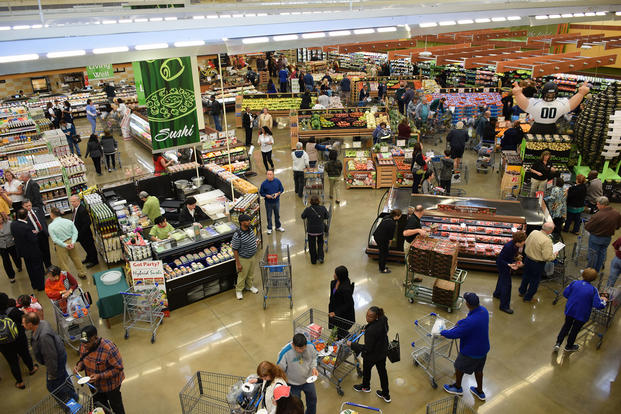Thanks to a proposed budget cut to what's officially known as the Supplemental Nutrition Assistance Program (SNAP), food stamps and military members have recently been a hot topic.
Yes, you heard me correctly: food stamps and military members. While the fact that about 13% of all Americans used SNAP for food aid in 2020 and more than 80% of those receive more than $90 a month in benefits doesn't make most Americans bat an eye, the idea that military families are among those users is shocking to many people.
And yet they are.
According to a 2019 report from the Government Accountability Office, more than 22,000 active-duty troops used the food stamp program in that year, the most recent data available.
The data on how many troops use SNAP are notoriously difficult to track, in part because the U.S. Department of Agriculture, which manages SNAP, does not share the data with the Defense Department.
By far the biggest question I have received in the series of news interviews I've done on the subject is something like this:
How is it that military family members are on food stamps?
I'm going to tell you.
You probably know people who use food stamps
The food stamp program currently provides assistance to individuals who qualify based on a combination of income and household size. It's basically impossible to make generalizations about who qualifies because each state administers the program a little differently, but the USDA does offer a chart that shows some general income guidelines.
Let's put it this way: Anyone who works anything even close to a minimum-wage job and has any number of other people in their household, such as children, likely qualifies for SNAP. Many, many hard-working Americans -- 13% of the entire population in 2020, according to USDA data -- qualify for food stamps. New school teachers, janitors, bus drivers, retail workers and your neighbors may all qualify for food stamps.
In short, food stamp users don't look like the stereotype likely in your head. And some of them wear U.S. military uniforms.
Qualifying for the food stamp program is a matter of math
Whether a family qualifies for food stamps has everything to do with household income level compared to household size. For military members, that means very junior troops -- on the bottom of the military pay scale -- with a few kids and stationed in a low cost-of-living area likely qualify for SNAP. The bigger the household and the more junior the member, the more likely they are to qualify.
'Why are troops paid so little?'
A political hot potato, the question of just why it is military members are paid so little that they qualify for SNAP likely has to do with how the compensation system was designed or, more specifically, who it was designed to pay.
I wasn't a fly on the wall when all of this stuff was hashed out. Heck, I probably wasn't even alive. But I can tell you that new troops aren't always fresh faced and straight out of high school. Many of them are. But sometimes new recruits come in with families as a change in profession, a trend that you can imagine may have slightly increased during the U.S. recession.
There are many, many people who believe the military compensation system must be modernized to offer better wages. I'll leave that debate to them.
Most troops aren't on food stamps
While any troops or military families going hungry -- or any Americans at all, for that matter -- are too many, the percentage of military families on food stamps is peanuts compared to the American population at large. In 2019, the last year for which we have such data, 1.5% of the active-duty force was on SNAP.
Hundreds more troops could qualify for food stamps
The Basic Allowance for Housing allotment is factored into the food stamp income calculation. That means troops who live in high cost-of-living areas where they receive -- and spend -- more BAH likely don't qualify when they arguably need the benefit the most, while those in very low-cost places do qualify.
Some anti-hunger advocates think this is a huge mistake, and legislation has been offered on the Hill in the past to change that. That effort stalled last year when a single congressman refused to provide a rules waiver that would allow the proposal to be moved through the defense committee instead of the agriculture committee, which typically oversees SNAP changes.
Keep Up with the Ins and Outs of Military Life
For the latest military news and tips on military family benefits and more, subscribe to Military.com and have the information you need delivered directly to your inbox.
-- Amy Bushatz can be reached at amy.bushatz@military.com.







